Weekly Recap
Indices closed the holiday-shortened week mixed after choppy trade throughout the week amid a slew of headlines about escalating tensions in the Middle East.
While the Nasdaq posted modest gains, the Dow Jones was flat, and the S&P 500 finished modestly lower across the week. Meanwhile, oil prices jumped amid concerns over the possible broadening of the war, which may impact oil supply.
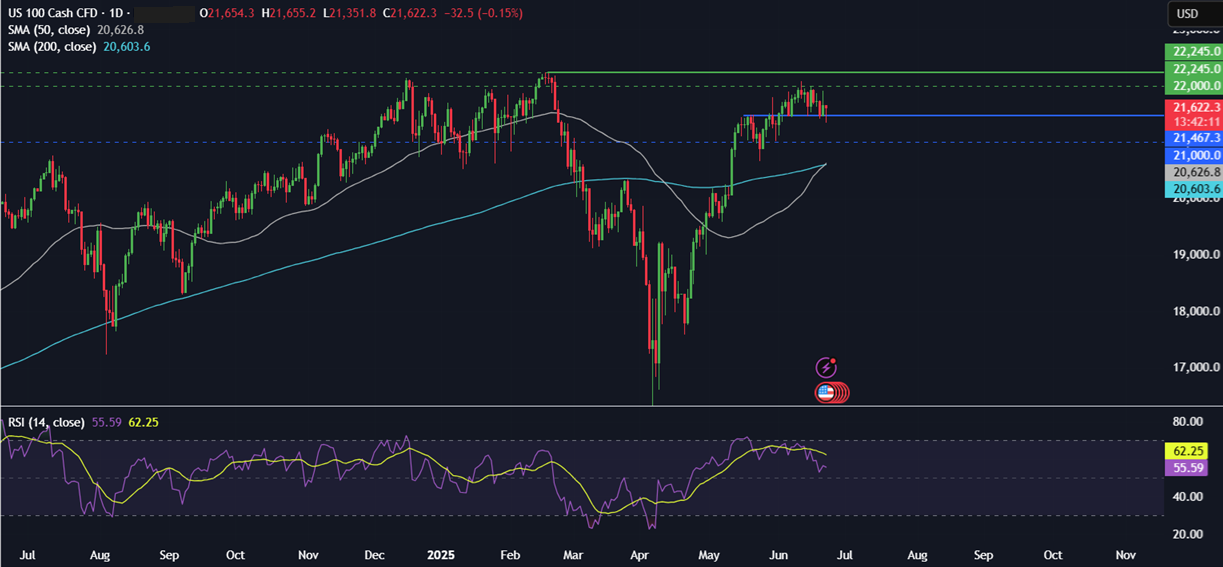
As widely expected, the Federal Reserve left its interest rate unchanged at 4.25 to 4.5%. Federal Reserve Chair Jerome Powell noted that the country’s economy is in a solid position despite the rising uncertainty. The Fed downwardly revised its growth forecast and upwardly revised inflation, warning over the expected inflationary impacts of Trump’s tariffs. However, Federal Reserve Governor Christopher Waller suggested on Friday that the Fed could be close to cutting rates as soon as July.
Geopolitical tensions
Geopolitical tensions will be in focus as the new week kicks off after the US attacks on Iran over the weekend, which have raised the chances of retaliation and higher oil prices. The Middle East situation will take centre stage for the markets, overshadowing most data releases this week, as investors assess the impact of Trump’s sudden decision to join Israel’s military campaign against Iran and await Iran’s response. Attention will be very much on the secondary effects, such as oil price, market stability, and potential price hikes in the economy. So far, the oil market has absorbed much of the impact from this geopolitical turmoil, with equities relatively stable; however, this could change, especially if the Strait of Hormuz is blocked and elevated oil prices start raising questions about the impact of inflation.
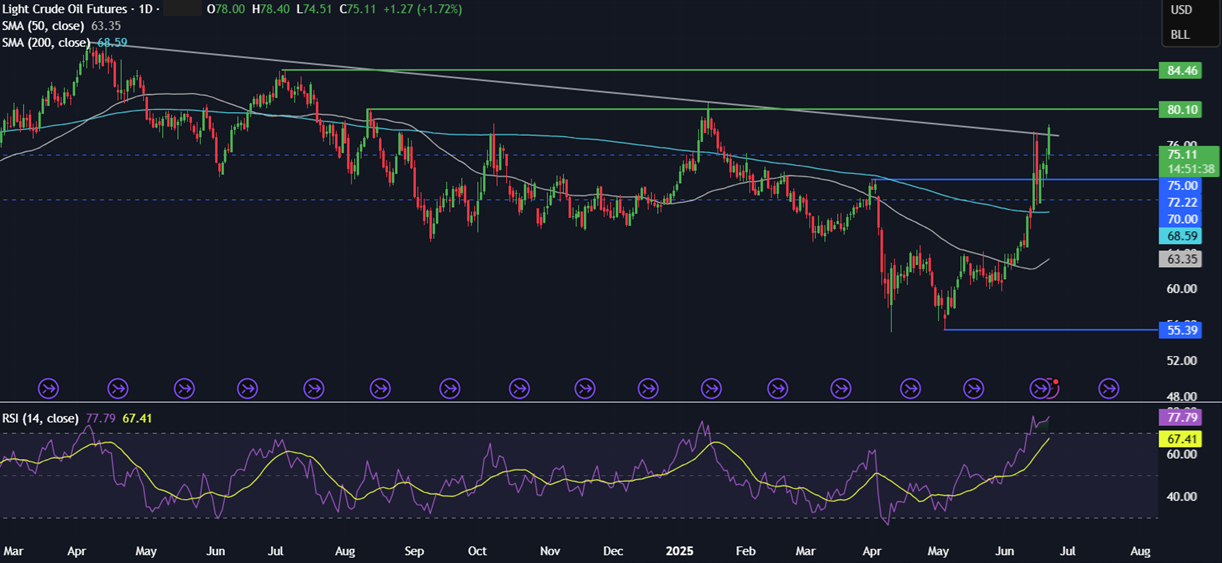
Eurozone PMIs (Monday)
Expectations are for a modest increase across the board for eurozone PMIs, with manufacturing rising to 49.7, up from 49.4. Services PMI is expected to rise to 50, the neutral level, up from 49.7, and the composite PMI, which is considered a good gauge for economic activity, is expected to push further into expansionary territory of 50.5, up from 50.2. As a reminder, in the previous release, there was an improvement in manufacturing and a deterioration in services activity, with both metrics in contractionary territory. Recent indicators have shown improvements. The eurozone-wide ZEW survey and the German economic sentiment both exceeded expectations. Strong data could provide support for the EUR. The markets assign a 10% chance for a rate cut in the next meeting.
While the EUR/USD uptrend remains intact, there are signs of the bulls running out of steam.
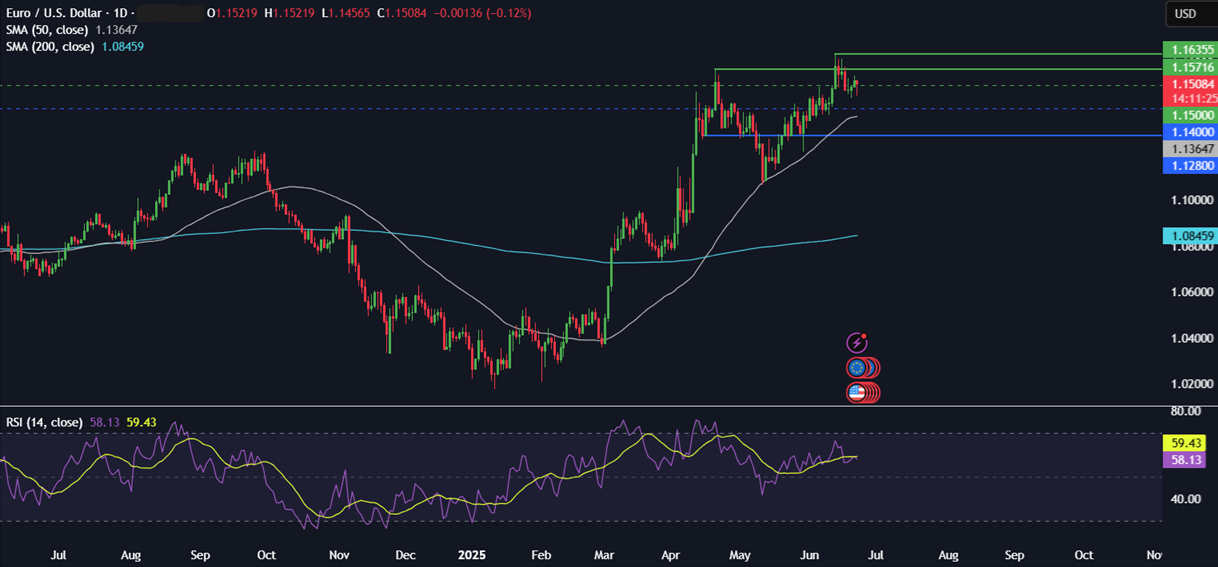
UK PMIs (Monday)
In the previous release, the May services PMI rose to 50.9 from 49, and manufacturing ticked higher to 46.4 from 45.4, meaning the composite PMI rose to 50.3 up from 48.5. Markets will be watching closely, particularly in the service sector, the dominant sector in the UK, for further signs that the economy is holding up despite expectations of slower growth across the remainder of the year. Regarding policy, the central bank left rates unchanged in the previous meeting, and the markets are pricing in around a 60% probability of a rate cut in August. Soft PMI data, particularly after the weaker retail sales and jobs metrics, could raise August rate cut expectations and pull GBP/USD lower.
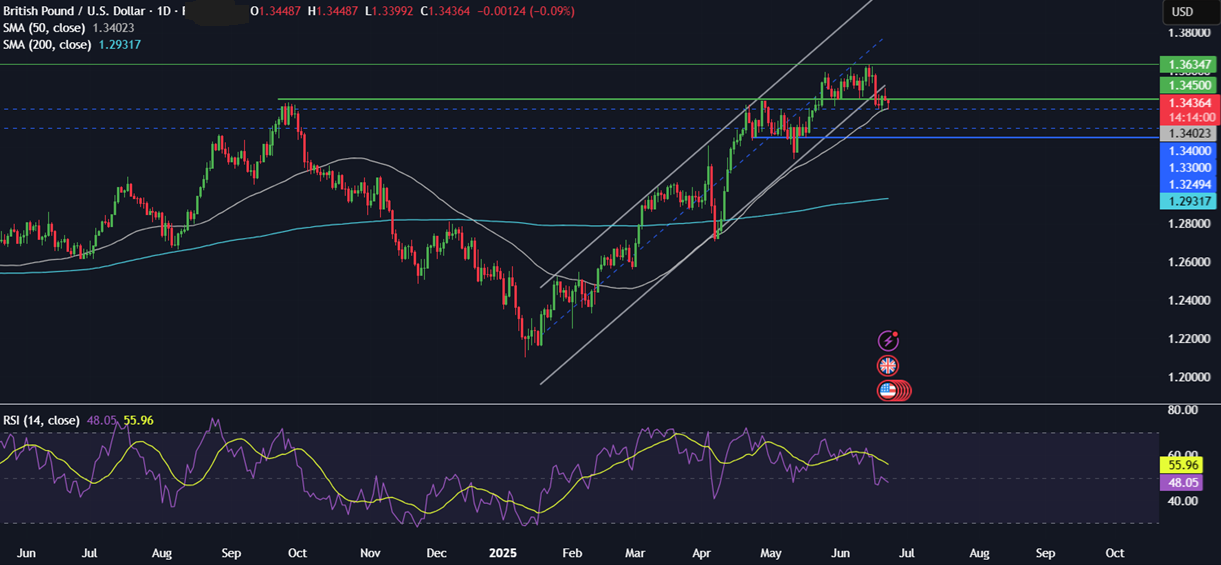
Canada CPI (Tuesday)
Canadian inflation data will give the central bank another look at consumer prices, as the inflation outlook has been a very mixed picture lately. Expectations are for inflation to rise to 1.8% YoY in May, after the figure slowed sharply in April to 1.7% amid a drop in petrol prices. The BoC warned in the recent meeting that the inflation picture is complicated, and firm underlying inflation could be an early sign of the impact of the trade war. For now, inflation cost pressures remain contained. Until a trade deal has been reached, inflation will likely be impacted by both tariffs from the US and Canada’s counter-tariffs. The BoC has been dogged by tariff uncertainty, keeping rates unchanged at 2.75% twice in a row as it waits for clarity on how inflation could be impacted. Hotter inflation could pull USD/CAD lower, back towards 1.3550.
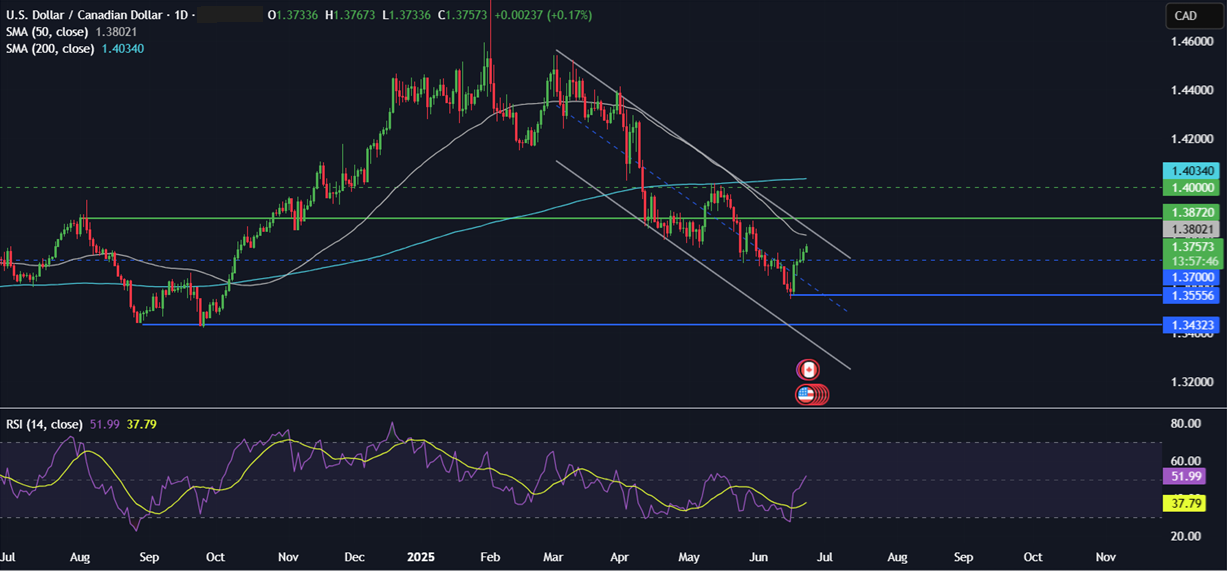
Tokyo CPI (Friday)
Tokyo CPI is typically seen as a leading indicator for the national inflation data, due later in the month. As a result, the figures can have implications for BoJ policy. At the June meeting, the central bank noted that core CPI had been running high at around 3.5%, supported by the pass-through of wage hikes and higher food prices such as rice. However, the BoJ expects these upward pressures to fade and warned that underlying inflation could become sluggish in the near term as economic growth slows. The BoJ also reiterated other risks, particularly those linked to uncertainty surrounding global trade, which can significantly impact activity and prices. Hot inflation could pull USD/JPY lower. However, the USD is proving to be the preferred safe haven, keeping the pair buoyed.
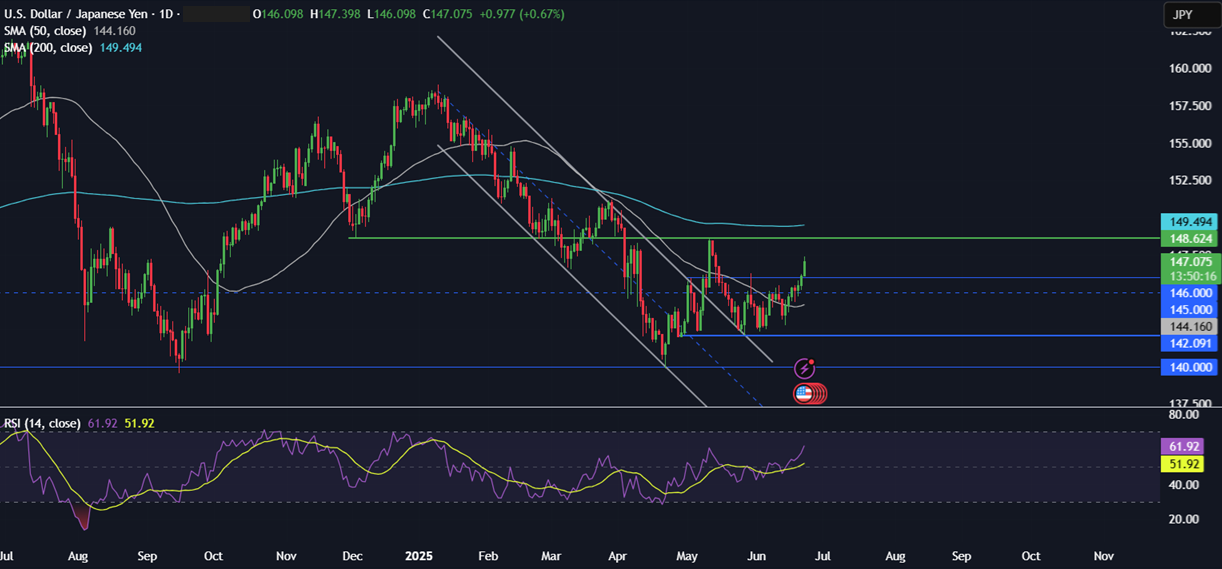
US core PCE (Friday)
Core PCE is the Federal Reserve’s preferred measure for inflation. The data comes after the May CPI and PPI reports were cooler than market expectations. Headline CPI rose just 0.1% month on month versus 0.2% expected. At the same time, core CPI rose 0.1% versus expectations of 0.3%. Meanwhile, PPI, inflation at the factory gate, rose 0.1% versus expectations of 0.2%. Expectations are for core PCE to cool for a third straight month.
The data comes after the Federal Reserve left interest rates unchanged and warned against the inflationary impacts of Trump’s trade tariffs. The market will also look at the personal spending component after signs of weakness in the previous month’s report. Cooling inflation could boost Fed rate cut expectations and boost Gold and stock prices. Interestingly Gold has not gained at the start of the week, held back by the stronger USD.
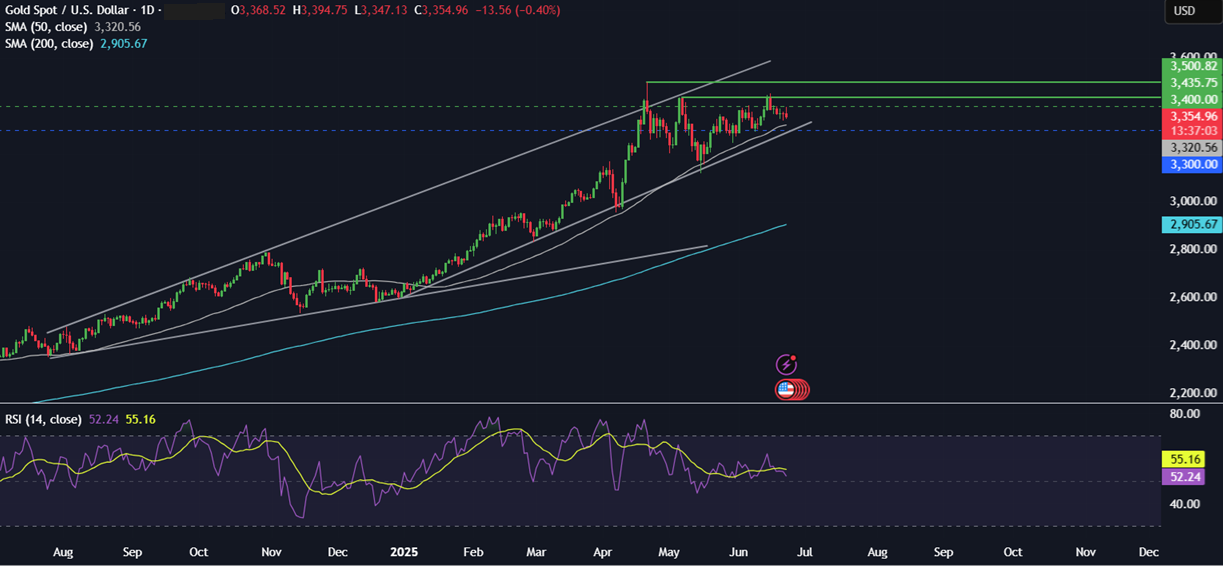
Trading involves risk.
The content provided here is for informational purposes only. It is not intended as personal investment advice and does not constitute a solicitation or invitation to engage in any financial transactions, investments, or related activities. Past performance is not a reliable indicator of future results.
The financial products offered by the Company are complex and come with a high risk of losing money rapidly due to leverage. These products may not be suitable for all investors. Before engaging, you should consider whether you understand how these leveraged products work and whether you can afford the high risk of losing your money.
The Company does not accept clients from the Restricted Jurisdictions as indicated in our website/ T&C. Some services or products may not be available in your jurisdiction.
The applicable legal entity and its respective products and services depend on the client’s country of residence and the entity with which the client has established a contractual relationship during registration.




